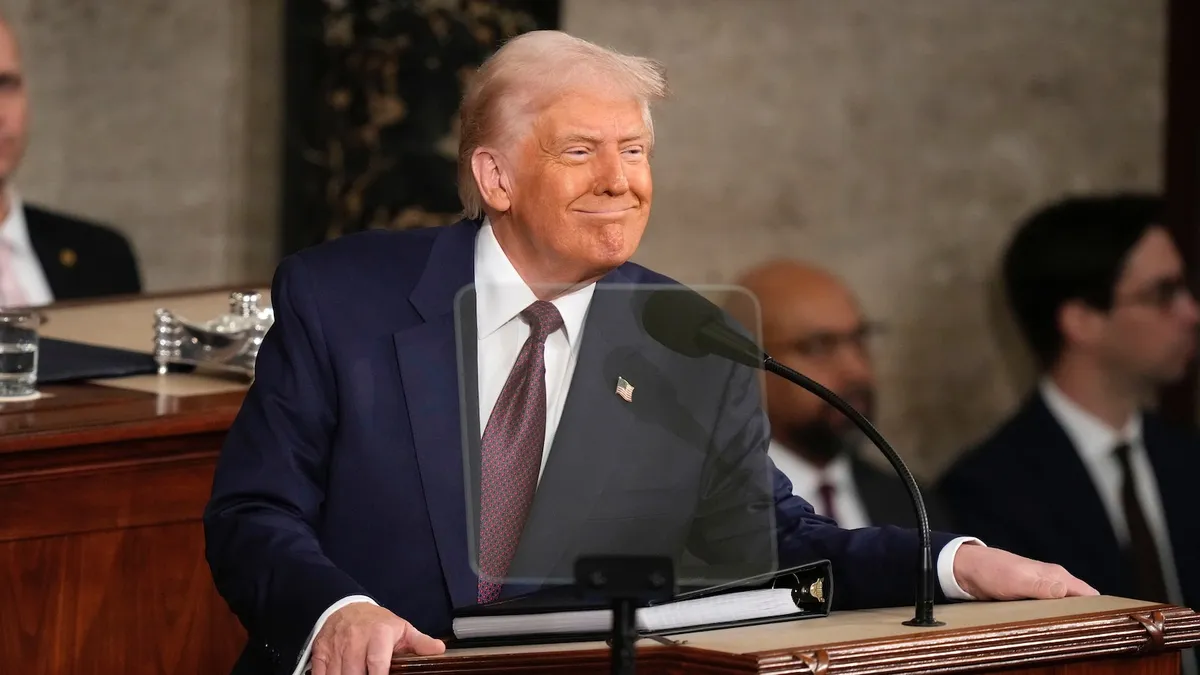
During a significant joint address to Congress on Tuesday, President Donald Trump emphasized his administration's commitment to tackling the rising rates of childhood cancer. In his speech, he stated that since 1975, the incidence of childhood cancer has escalated by more than 40 percent. This alarming trend has become a top priority for the newly established presidential commission, titled Make America Healthy Again, which is chaired by the Secretary of Health and Human Services, Robert F. Kennedy Jr.
To underscore the importance of this issue, President Trump invited a 13-year-old brain cancer survivor as a special guest at his address. This personal touch not only highlighted the human aspect of the statistics but also aimed to raise awareness about the challenges faced by young cancer patients. While Trump's assertion regarding the 40% increase in childhood cancer rates is notable, it is essential to consider the context behind these figures.
Recent data indicates that childhood cancer rates have indeed been on the rise. A study published earlier this year in the journal PLOS One, authored by researchers from the U.S., Germany, and Jordan, reported that childhood cancer rates in America have increased by approximately 33% since 1975. Specifically, the incidence of childhood cancer rose from 14.23 cases per 100,000 children between 1975 and 1979 to about 18.89 cases per 100,000 children between 2010 and 2019. This increase was particularly noted in specific cancer types such as leukemias, lymphomas, brain tumors, hepatic tumors, and gonadal germ cell tumors.
Dr. John Prensner, an assistant professor of pediatrics and cancer biology at the University of Michigan School of Medicine, emphasized that while the increase in diagnoses is accurate, the context surrounding these numbers is crucial. Advances in early detection and improvements in medical imaging technologies, such as CAT scans and MRI scans, have significantly enhanced our ability to diagnose childhood cancers that may have previously gone undetected.
Furthermore, Dr. Prensner pointed out that many children today are closely monitored for potential cancer syndromes, allowing for earlier diagnoses before cancers can progress. This proactive approach, combined with advancements in treatment options, has resulted in a growing population of childhood cancer survivors.
While advancements in medicine play a significant role, environmental factors may also contribute to the rising rates of childhood cancer. A comprehensive study released in March 2024 analyzed over 200 previous studies and found links between exposure to pesticides, hazardous air pollutants, and chemicals like benzene. These environmental factors have been associated with increased rates of childhood cancers, particularly leukemia.
Despite the rising rates of childhood cancer diagnoses, it is important to note that childhood cancer mortality rates have significantly declined. According to data from the Centers for Disease Control and Prevention (CDC), the cancer death rate for U.S. children and teens aged 19 and younger fell by 24% between 2001 and 2021, from 2.75 to 2.10 per 100,000 individuals. Dr. Prensner noted that there are now approximately 500,000 childhood cancer survivors in the U.S., many of whom are now adults, highlighting the effectiveness of improved treatments and early detection methods.
Lisa Lacasse, president of the American Cancer Society Cancer Action Network, expressed her support for President Trump’s focus on childhood cancer rates. She noted that while pediatric cancer incidence has increased over the past few decades, the mortality rate among children and adolescents under 20 has decreased by more than 50% from 1975 to 2022, according to the National Cancer Institute. This remarkable progress in survival rates is a testament to the vital investments in research and breakthroughs in treatment.
In conclusion, while the increase in childhood cancer rates raises important concerns, advancements in detection and treatment have led to significant improvements in survival rates. Continued focus on these issues by leaders like President Trump can further drive awareness and action towards making a positive impact on childhood cancer outcomes.